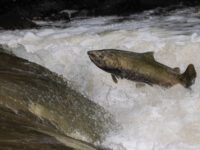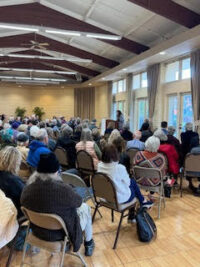An information tag is attached to some twist ties explaining precautions to be used in handling.
Following the California Department of Food and Agriculture (CDFA)’s presentation before the board of supervisors last week, several issues remain unclear. How much of a pest is the light brown apple moth? Are the eradication measures necessary? Does protesting the application of twist ties make sense?
Grape grower Ned Hill, who spoke at the meeting, described the impact on the quarantine on his business, in an interview afterward. “The immediate consequence is about $1,500 to spray for this thing so hopefully nobody finds it in my vineyard. The potential cost would be the whole crop.” Hill is spraying with BT, an organically approved spray. In the big picture, he said, it can result in a lot more spraying.
Assembly Member Jared Huffman, reached by phone after the session, acknowledged growers’ problems with the quarantine and the responsibility some, such as Hill, will try to practice. “Good for Ned,” he said. “But is Kendall-Jackson going to use the same thing? Is Gallo?” Huffman’s position is that as long as the pest is declared a Class A pest by the Department of Agriculture, growers face being crippled at the market.
“There’s a bigger picture here,” he said, “and that is the trade implications and what we’re doing to our agricultural economy if we don’t take reasonable steps to eradicate this invasive moth. The problem is if we don’t eradicate it now, our products, our grapes, our other agricultural products are going to start to be embargoed.”
Dave Whitmer, agriculture commissioner in Napa, where the discovery in 2007 of two individual moths in separate areas triggered the full-bore eradication program–traps, spray (with BT), twist ties, and quarantine–offered his thoughts, having gone through the experience, and read about the protests against the CDFA’s measures.
“We don’t know now what the risk is,” he said. “People say, ‘You haven’t seen any damage.’ The whole point is to not allow it to get to the stage where we don’t have the ability to keep it under control.”
What Huffman, Valerie Brown and independent scientists such as Prof James R. Carey, UC Davis, who testified before the Secretary of Agriculture in May on the LBAM, all agree is, as Huffman said, “that all of our policies be based on sound science and open public process.” He encouraged those who wish to protest to be part of that process. “I think folks who believe, perhaps rightfully, that the whole LBAM eradication effort is not necessary really need to be helping us come up with solutions to help us with these trade impacts, if we go down that road. Right now, I don’t see that solution.”







